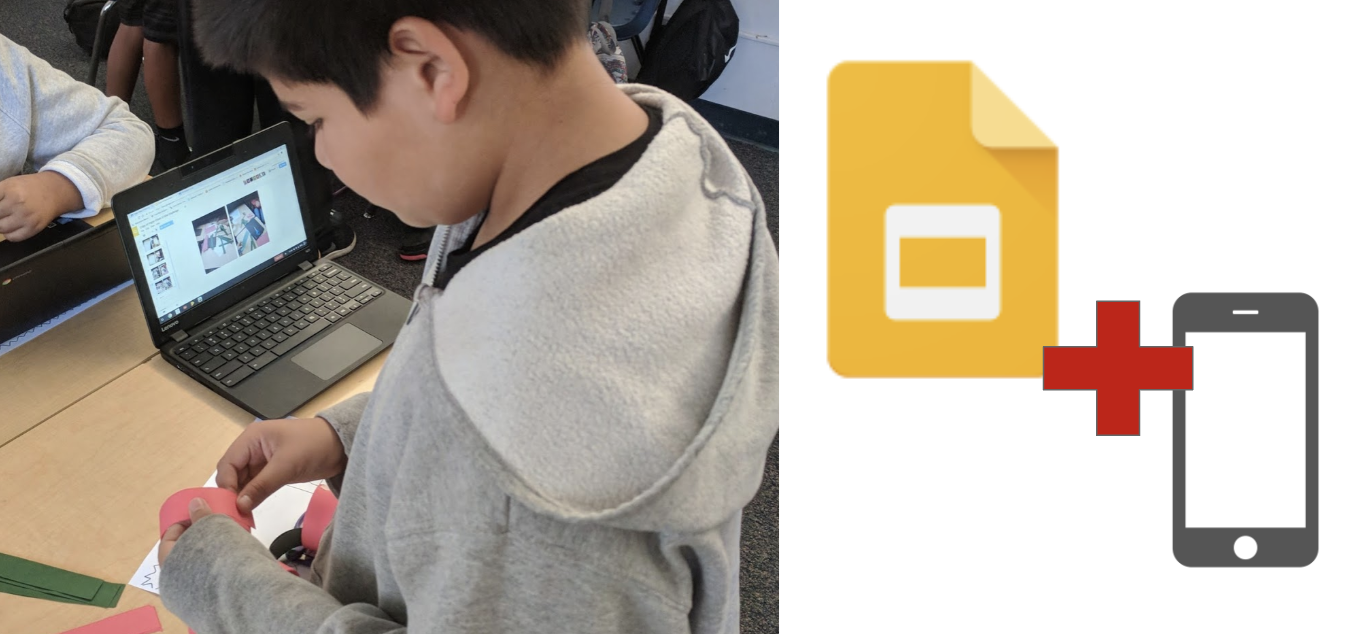
This spring I came across a few educators who indicated they struggled to find meaningful ways to utilize technology in the classroom. I asked if I could spend some time in their classrooms to observe the instructional environment to guide our collaborative work toward impactful technology integration. The educators agreed and welcomed me into their rooms. I noticed a trend. In each classroom I visited, technology was used with an all or nothing approach. When students used devices, they did not have any paper, physical books, math manipulatives, or dry erase boards on their desks. They did not speak with their peers. Often, students had headphones on, furthering their isolation from each other. By the same token, anytime a student had a low tech or no tech tool with them, there was no digital device to be found. The problem was not that these educators were afraid of technology, or that they did not believe it could be a powerful tool. Rather, they had not yet found ways to seamlessly integrate technology into the solid instructional strategies they had been using before the devices had been introduced.
Students benefit from kinesthetic experiences. There is a great deal of research that touts the benefits of handwritten rather than typed notes. In science, mathematics, and the arts, there is a great benefit to creating models, whether physical or visual. Then how do we integrate technology while maintaining these research backed no tech approaches?
Consider the image below. The educator who designed this learning experience utilized a mixed methods approach. Students use physical manipulatives to create mathematical models. But they also use technology. Next to the manipulatives, students’ digital devices are on their desks in order to access mathematical problems and then submit their learning in digital format. This is an integrated approach.

I have seen that the concept of an all or nothing approach to technology is a relatively common dilemma. There is a misconception in education that the most effective use of technology occurs with 1:1 devices using learning analytic software that automatically adjusts and offers feedback. District administrations spend a great deal of financial resources on programs that collect and track data regarding student use. Administrators carefully analyze students’ time in the program, to ensure that the money was well spent. While a 1:1 environment and learning analytic programs are not inherently harmful, when they are viewed as a silver bullet, we lose sight of our role as educators. It is our job to integrate technology into solid pedagogical strategies. If educators allow technology to replace their instruction, they are in danger of being replaced.

Using a mixed methods approach, the focus of the technology changes. Rather than using the technology to “teach” students, we use it to enhance the learning experience. Technology can be mixed with no tech methods to digitally document work, foster peer teaching, and allow for metacognition. Students can create no tech models, read physical books, draw sketchnotes, and then use technology to share learning on collaborative platforms.

In a professional learning session I recently facilitated regarding technology integration in mathematics, educators created visual models. I took pictures of these models with my phone, and added these images to a Google slides presentation to which all participants had access. I asked educators to view the slidedeck to learn from each other, to spark additional ideas to continue on their mathematical learning journey.

I have seen this done with students in the classroom as well. In one example, students solved a STEM design challenge using paper. The teacher took pictures with his phone and added them to a slidedeck. Students viewed the slides when they needed support, when they were frustrated. These students were learning from each other. Peer teaching was facilitated through technology. But it was done using a mixed methods approach.

Young students benefit from digitally documenting physical models as well. Consider this five year old who created a physical representation to demonstrate number sense, and then took a picture of his learning on the free app Seesaw. This student took it a step further. After taking a photo of his learning, the student made an audio recording, thereby providing a verbal explanation of his reasoning. This video was shared in the class journal for all of his peers to see. This collaborative, peer teaching strategy provides support to students who are unsure of how to complete the assignment. They can view a peers’ response first, and then create their own. Again, this is a mixed methods approach. It leverages solid pedagogical practices such as verbal explanations, kinesthetic approaches, and communication amongst peers.
Technology does not drive, but enhances these solid learning strategies. Be sure that you do not live in the world of isolation. Tech is not an all or nothing tool. Blend strategies together and don’t ditch what works. No tech, high tech, low tech, educators can mix these methods together to design a seamless learning experience that focuses on learning as the ultimate goal.
